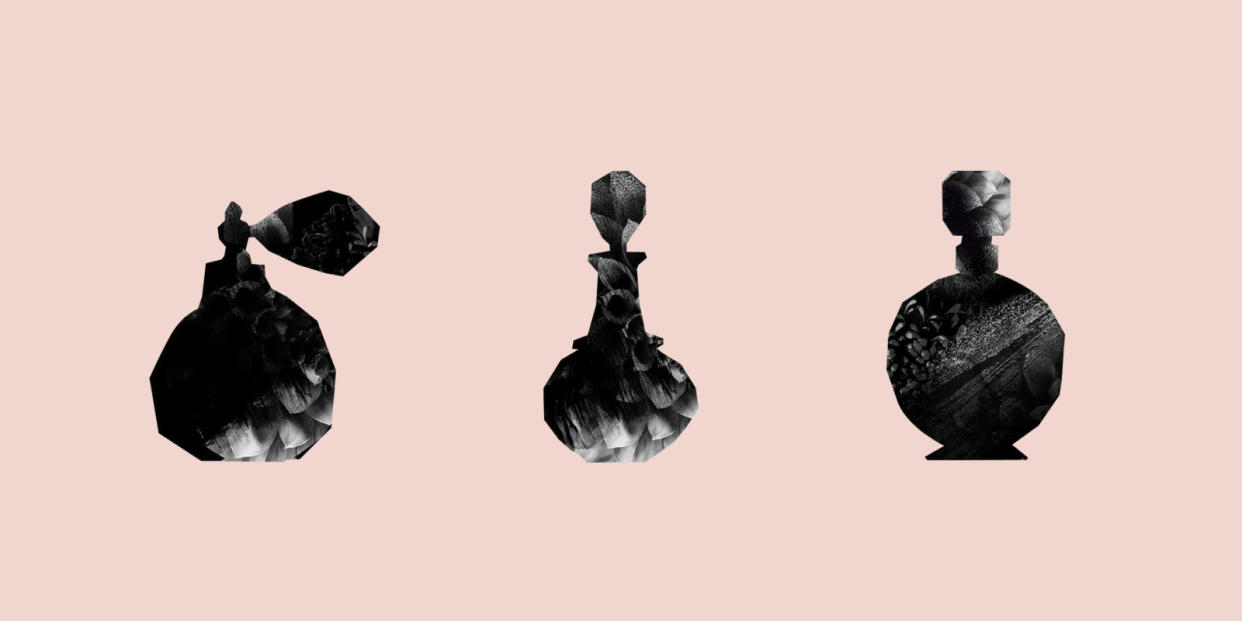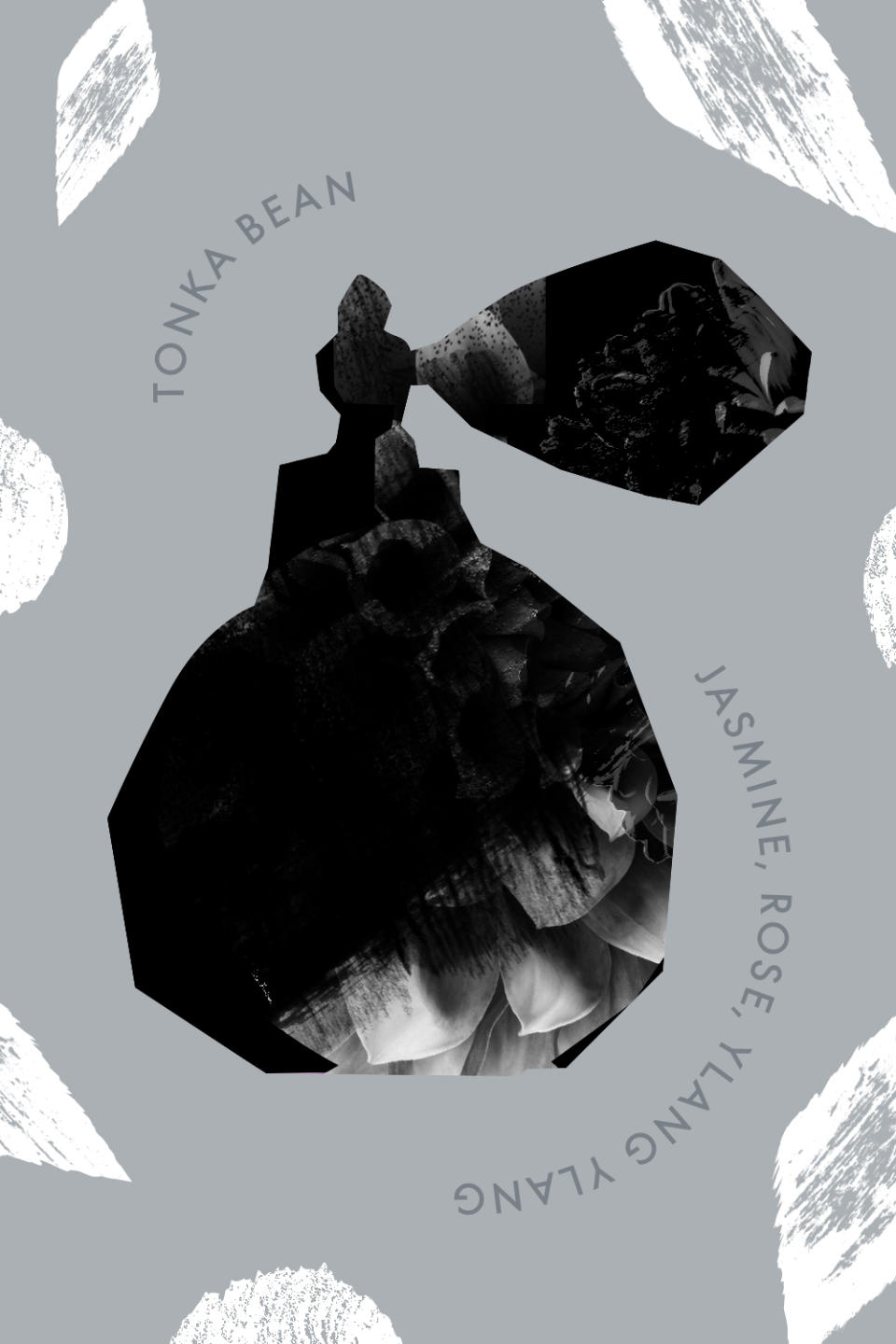Notes From Underground: Can a Fragrance Help Us Embrace Mortality?

In Patrick Süskind's cult classic novel Perfume: The Story of a Murder, an obsessed olfactory genius takes to killing teenage girls so as to study and replicate their scents. The fragrance he then creates is so bewitching that he is exonerated for his actions-at least until a mob, impassioned by the scent, consumes and devours him out of "love."
Fragrance has always possessed a strong link to human mortality: from the perfumed oils said to have been used to anoint Jesus before his burial, to the ephemeral nature of a top note, and the capacity for a signature scent to conjure the memory of a person long after they are gone. But some perfumes are created specifically to evoke this connection, and their scents are more intertwined with the idea of the morbid than others.

Serge Lutens' purple-hued De Profundis is said to be inspired by a walk through a cemetery and was released in 2011 with a press release that read, "When death steals into our midst, its breath flutters through the black crepe of mourning, nips at funeral wreaths and crucifixes, and ripples through the gladiola, chrysanthemums and dahlias...Clearly, Death is a Woman." Lush's flowery, animalic Death and Decay, which contains notes of ylang ylang, rose, tonka bean, and jasmine, is purported to help those who encounter it contemplate "the fullness of beauty and its inevitable decay without fear."
I tried a sample of De Profundis from the fragrance counter at Barneys and wore it around for a few days. It smelled soapy to me-maybe a little melancholic, but a clean melancholy, much neater than I imagine my death to be. Then again, I plan to be cremated. I then purchased the solid perfume version of Death and Decay, anointing my wrists with it, like stigmata, as well as my third eye chakra. I wore it like this for a week, but did not find it brought me any closer to making peace with my inevitable decay.
I might be a tough customer, but who regularly wears these fragrances, and why? Are customers drawn to the visceral scents themselves, or is it the names and marketing concepts that hold appeal? Do these macabre fragrances embody a pre-existing aesthetic component of a person's identity, or do they express a more unseen side of the wearer?
A mold infestation has surely never smelled so good.
Daphne Mir, a 26-year-old designer living in Los Angeles, knew that Black Phoenix Alchemy Lab's Thanatos would be her signature scent when she read the list of notes in a binder at the store: sandalwood, myrrh, and moss. Thanatos is a figure in Greek mythology who personifies death, but for Mir, the appeal of the death element actually came later.

"I'm typically vivacious, friendly, and silly," she explains to me. "However, Thanatos has a complexity, a darkness, and a sultriness which makes me feel more mysterious and powerful in my skin." Contrary to what you might think, the concept of the fragrance isn't intimidating; it's quite the opposite, she says. "When you need a confidence boost, what is more empowering than draping yourself with the shadow of death incarnate? I'm terrified of death! But I'm fascinated by the Death Instinct-or, as the scent's description says, 'the desire to embrace the quiescence, silence, and peace of the grave.' It's such a juxtaposition to my daily life that it can be bewitching and terrifying simultaneously."
For Angela Pane, a 31-year-old customer care associate in Minneapolis, the name and idea of Death and Decay immediately drew her to the fragrance, thanks to her existing interest in the temporary nature of life. "My favorite poem is [Robert Frost's] 'Nothing Gold Can Stay,'" she says. "I always have it in the back of my head, this idea of impermanence. We all die, everything ends, people leave. I tend to wear a lot of black, and I have this 'sad girl' identity-mourning, always too serious. So this fragrance fits in well with all of that." And what better scent could there be to accompany a performance by the mournful pop dirges of The Cure? "Death and Decay seemed to complete my outfit and mood for such an occasion," Pane says.
What goes into making these deathly scents? A few years ago, chemist Raychelle Burks at the University of Nebraska came up with an idea for a "death cologne" that would actually mimic the smell of rotting flesh. The fragrance would contain the chemicals putrescine, cadaverine, and skatole, which are emitted by decaying flesh, as well as dimethyl trisulfide, which smells like an open, festering wound. A zombie aficionado, Burks has suggested that should the zombie apocalypse come, we could wear the cologne and fool the creatures into thinking we are already dead.
The fragrance would contain the chemicals putrescine, cadaverine, and skatole, which are emitted by decaying flesh
Luckily, it's unlikely that one will find a perfume derived from an actual rotting corpse. "For the most part, perfumery now is all synthetic aroma chemicals," says Steven Gontarski, the manager of Los Angeles's Scent Bar. "A good perfume will have a small percentage of naturals-perfumers say it gives it the soul of a perfume-but the structure is all synthetic-based. People use words to describe scents like 'violet,' but the perfumer might not actually be using violets. But if you scan out the molecular structure of that smell, it will be the same molecular structure as from a violet."
A "soulful" fragrance can often be pricier. Such is the case with genuine oud, an oil created when the wood of the Southeast Asian agar tree becomes infected with a particular type of mold. Oud has been popular in the Middle East for thousands of years, but has only become prevalent in western commercial perfume markets in the past five years, according to Gontarski. Many commercial western fragrances that are oud-themed don't contain oud oil, which can sell for $5,000 a pound or more-or they are composed of a hybrid of notes, like Clean's Sueded Oud, which also includes a number of white florals, amber, musk, and its namesake, suede. A 100ml bottle of Sueded Oud costs $95 and can be found at Sephora, whereas Kemi's Ilm-which contains very few other notes besides oud-costs $330 for 50ml and is much harder to find.

When I visit Scent Bar, Gontarski introduces me to a few different ouds from the Kemi line. They range from funky to cheesy, but I like it. A mold infestation has surely never smelled so good. He also produces the double whammy of decay fragrances-Dusita's Oudh Infini-which contains both oud and civet. A glandular secretion produced by the civet cat, the civet note is reminiscent of halitosis or gum disease, according to Gontarski, and I have to agree.
While these fragrances are rare in the United States, and not immediately appealing to the perfume novice, Gontarski lets me know that Scent Bar's clientele-many of whom are perfume-obsessed-love a more "challenging scent." "There's also another note that people talk about when discussing challenging smells, and that's indole," says Gontarski. "Indoles on their own smell like mothballs, which I sort of like, and all white florals have an indolic quality. But indole itself is also in feces. So it can go either way." In Diptyque's highly indolic Olène, I don't smell any feces, but I do detect a hint of those mothballs. It feels like less of an I-want-to-get-laid smell and more like an I'm-writing-my-will scent.
"The whole thing about more challenging smells being in perfume, that's as old as time," says Gontarski. "But in the '90s, things went very clean. Now people are coming in and wanting to know what are the most challenging, least clean and pretty smells."
But most fragrances marketed as macabre are not as challenging as they might seem. Demeter's Elvira's Zombie contains the friendly, pretty notes of vanilla bean, cherry, ylang ylang, and poppy. Black Phoenix Alchemy Lab's Burial is made up of patchouli, juniper, and florals. And Akima Botanicals' Cemetery contains rose, cut grass, and sweet pea.
"This is what I find so funny," says Gontarski. "So much of it is just about marketing. Something can be in a black bottle with lots of skulls, but it may be composed of roses and jasmine. But the thing is, because your mind wants to think, 'This is deathly,' you're going to convince yourself that it's deathly. And that's the beauty of perfume. It's all fantasy."
You Might Also Like

